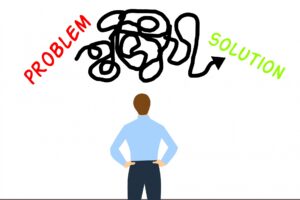
This line—”Time keeps on slipping, slipping, slipping, into the future”—from the Steve Miller Band’s hit song Fly Like an Eagle captured the elusive, ephemeral nature of the present moment. The video that accompanies the song shows a digital clockface with the numbers rapidly cycling, and flowing clouds with the “fly like an eagle” lyric.
But these images, as compelling as they and the accompanying music are, fail to capture the rapidity with which the present is emerging and “becoming” the future. Master Dogen is said to have likened the being-in-time to a snake that is continually molting its skin. The person of the self is constantly re-emergent in time, moment by moment. It is as if time is momentarily re-emerging in and throughout the senses, but we become insensitive to it, blinded by the illusion of continuity.
If time were something capable of motion, it would have to be a form of energy, or an entity with mass, such as a celestial body or a cockroach.
zenkai taiun michael elliston, roshi
Like a stop-action-animation of a flower blossom unfolding, unseen and heretofore unknown and unknowable dimensions of existence are revealed by technological advances that allow us to witness such hypnotic patterns of growth and movement in nature. One rather grim, recent series of such images documents the rapidity of decay that sets in when an animal has died, and the local population of scavengers, ants and maggots goes to work, reducing the corpse to a skeleton in a matter of hours, a few days. Seen in sped-up time, even such a grisly image has its own beauty.
But there is no need to resort to such techniques to witness a clear and consistent example of the passage of time, as we conceive it. (Passage of time as we conceive it because the meme that time is passing is suspect. It may be that the witness is what is actually passing—life is fleeting as an arrow.)
While sitting in the zendo this morning, my vision was particularly raw, being fresh-woke, as we call it where I come from. When my gaze moved from the bench of black cushions against the white wall, the after-image in reverse popped out starkly, like a piece of negative photographic film, overlaid on the present image of the zendo. We call this effect the “after-image” and explain it away as the electro-chemical reaction of the organ of the eye, specifically the fluid resonance in the retina of the impact of light. (With the advent of the digital revolution in photography, we are in danger of losing the analog metaphor for inverted positive image, other than as a Photoshop effect. Media have an effect on the consciousness that invents them, as Marshall McLuhan explained in such detail in The Medium is the Message.)
So it seems that we are seeing the immediate past moment on top of the present moment. And we say it is the passage of time, ever fading into the past. But how can time itself be said to be moving? If time were something capable of motion, it would have to be a form of energy, or an entity with mass, such as a celestial body or a cockroach. Even in those cases, movement is meaningful only relative to the environment. At the center of each being, or each photon, no self-movement is to be found, relative to itself. If time is a reality, it can not be moving relative to itself. So against what context may time be said to be in motion? Everything else may be said to be moving “in time,” but even as a context for space, time cannot be discerned separately. Nor can space, for that matter.
People who know—or should know—a lot more about this than I do, often speak of time as a dimension, and speculate as to the “smallest unit” of time, sometimes referred to as the “chronon.” Like the smallest particle of matter, or the smallest dimension of space, these conceptual absolutes seem forever out of reach in the practical realm of the scale on which we all live.
However, the so-called after-image may be taken as the ghost of the last moment being imposed upon the present moment, like an image projected upon the screen of vision. As such, we can see the negative image floating in space, overlaid upon the field of vision as currently focused, the input that the retina is receiving. When we hold the gaze in a fixed position, we see instead bright edges wherever there is an extreme contrast of light and dark or color. By forcing the eyes to remain relatively still, the normal, subtle shifting of the gaze owing to automatic movement causes flickering after-images around the edges of objects and areas of light and shadow, shimmering with exaggerated light. These illustrate the moment-by-moment movement that we call time. But actually, according to Master Dogen, it is being-time that is in constant motion, constant change.
In Shobogenzo Uji (Existence-Time) Dogen analyzes time and finds it inseparable from our being, or existence itself. Note that Buddhism in general and Zen in particular do not speculate as to whether there is existence outside the realm of being, as in consciousness, so this is not a theory of the physical universe as an abstract principle. Instead, it includes the observer from the beginning, so that there is no sensible discussion of time outside of being, in the sense of sentient beings. Whether “existence exists” outside of the mind of the observer is not a question that Zen would entertain, let alone try to answer. Of what interest could it possibly be to the mind asking the question?
If this effect is true of one sense, that of vision, then some analog of it must be true for the other senses. Thus there must be some sort of after-sound in hearing, which is most obvious when exposed to extremely loud noises, resulting in temporary deafness or ringing in the ears. But it must be happening also on some subliminally subtle level as well, an effect that is constantly overlaying, and perhaps interfering with, perception of the current sonic environment. Perhaps what is referred to as tinnitus, continual ringing in the ears, is simply a deeper level of hearing, and not a disorder.
The common expression “aftertaste” is not perfectly parallel to the after-image, as it often refers to a delayed reaction, sometimes emotional, or a lingering material overlay, and thus is still in the present moment. But rinsing the mouth between wine tastings is an example of the effect chemical residue on the perception of flavor. Taste and its partner, smell, are both largely chemical and thus do not offer as clear-cut a dividing line between one sense impression and the next, as do seeing and hearing.
There must also be a kind of after-touch phenomenon in the body. Again, under extreme conditions of hot and cold, or exercising as in a workout, the reaction can be extreme, and long-lasting. But even moment by moment, with no clear change in the source of tactile sensation, the prior moment must be conditioning the present.
So if we can take the example of the after-image in vision as being inexorably linked to time, as well as perception of the present, we can see that the field of vision is continually distorted by the overlaying of the after-image, even though we cannot see it. By extension, the present range of hearing must be constantly conditioned by the immediate past moment, and so we are not fully hearing in this moment. Same for the sensation of the body.
This leads to the effect and necessity of zazen—sitting still enough for long enough—for these effects to adapt and eventually subside. Entering into stillness means that the effects of adaptation that are already in play are allowed to manifest fully in consciousness, instead of constantly slipping, slipping, slipping, into unawareness. This is waking up to what already is, including that which is usually ignored. Ignore is the root of ignorance, so it is only natural to train the mind to stop ignoring what is right before the face, in order to overcome self-imposed, habitual ignorance.









